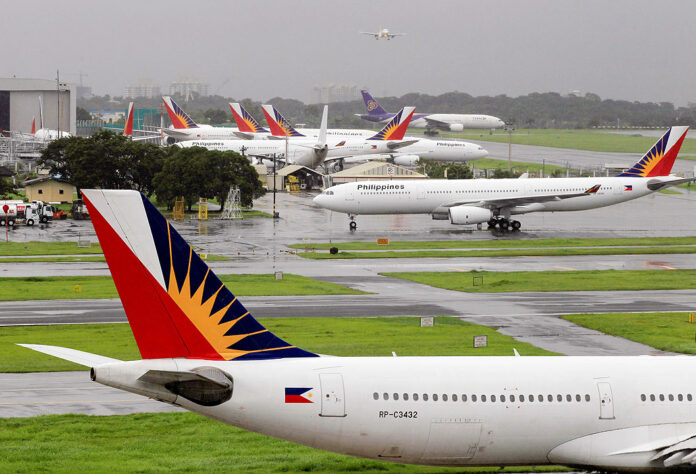By Arjay L. Balinbin, Senior Reporter
A SECOND HEARING on flag carrier Philippine Airlines, Inc.’s (PAL) Chapter 11 case in the United States has been set for Sept. 30.
Eight motions pertaining to PAL’s customer programs, insurance, taxes, derivative contracts, employee wages, cash management, critical and foreign vendors, debtor in possession (DIP) financing will be heard “on a final basis” before Judge Shelley C. Chapman of the United States Bankruptcy Court for the Southern District of New York, the notice of the hearing stated.
A separate notice of hearing was issued on PAL’s restructuring support agreements motions, which will also be held on Sept. 30.
On the second hearing, PAL will seek the court’s approval to obtain DIP financing provided by its direct and indirect holders in the amount of $505 million.
The DIP financing is composed of a multi-draw term loan facility in the amount of $250 million — access to $20 million of which was approved by the bankruptcy court last week — and another multi-draw term loan in the amount of $255 million.
The $20 million will be for “critical vendors and wages,” PAL said in a statement sent to BusinessWorld on Saturday.
“The payment to big creditors — with whom PAL negotiated with to come up with RSAs or restructured [support] agreements — can only be carried out when the DIP (facility) is approved. The hearing will be towards end-September,” it added.
In PAL’s motion for entry of an order authorizing it to assume and perform under the restructuring support agreements, four creditors will have “allowed claims” against the company without having to file a proof of claim. These are Airbus ($1.6 million), Asia United Bank Corp. ($75.5 million), Philippine National Bank ($113.8 million plus any accrued interest and any other amount due), and Rolls-Royce PLC ($89.5 million as pre-petition claim and $33.5 million as cure claim).
PAL Chief Financial Officer Nilo Thaddeus P. Rodriguez said in his declaration in support of the company’s “First Day” motions and applications last week that the airline expects to exit its recovery phase by 2022, with operating activities seen to “generate more consistent positive monthly cash flow.”
He said the company expects an operating income of $220 million next year and $364 million in 2023.
“Based on the projections and available data, EBITDAR (earnings before interest, taxes, depreciation, amortization and restructuring) margins are expected to improve from 2% in 2020 to 7% in 2021 and by as much as 27% in 2025,” Mr. Rodriguez said.
In its revised business plan, PAL intends to exit unprofitable markets and selectively increase regional capacity in targeted growth markets.
It will consolidate domestic capacity from Clark International Airport to Manila International Airport “due to market demands.”
PAL also said it anticipates growing capacity in short haul regional routes, especially growth markets such as China, consolidating capacity in the West Coast gateways and canceling certain ultra-long-haul flights, while maintaining profitable opportunistic flying from Cebu as a source of continued growth.
The embattled airline has approximately 4,500 workers as of June 30 of this year. It had been incurring losses even before the pandemic. Its attributable net loss widened to P71.91 billion in 2020 from P10.31 billion in 2019.
COLLECTION
Meanwhile, the government will still collect the unsettled landing fees of Philippine Airlines, Inc. (PAL), Finance Secretary Carlos G. Dominguez III said.
In a Viber message to reporters on Friday evening, Mr. Dominguez said PAL has P373 million in outstanding obligations to Civil Aviation Authority of the Philippines (CAAP) as of Aug. 31, based on a report from Transport Secretary Arthur P. Tugade.
Manila International Airport Authority (MIAA) also has total receivables from the airline of P114.2 million in terminal fees, and unpaid charges for aeronautical, rental, check-in counter and utilities worth P915.45 million, as of August.
While giving no specifics, Mr. Dominguez said the government can still collect the outstanding landing fees from PAL since these are excluded from the provision of Republic Act No. 10142 or the “Financial Rehabilitation and Insolvency Act (FRIA) of 2010,” that waives taxes and fees due to the government during the rehabilitation process of distressed companies.
Under Section 19 of FRIA, Mr. Dominguez said taxes and fees due to the National Government and local government units will be waived in response to the rehabilitation procedures, after the Commencement Order was issued by the court or the rehabilitation plan has been approved.
“This provision does not apply to landing fees as these are not collected by the National Government, but by the CAAP or MIAA. Also, it can be considered that landing fees are ordinary and regular expenses hence may be collectible even during the implementation of the rehabilitation plan,” Mr. Dominguez said in his Viber message.
Quoting Mr. Tugade, the Finance chief said PAL has committed to “make current all their obligations to CAAP” obtained starting July 2021 while other obligations prior to that month will be subject to reconciliation and immediate payment as agreed upon by the two parties. — with B.M.Laforga

